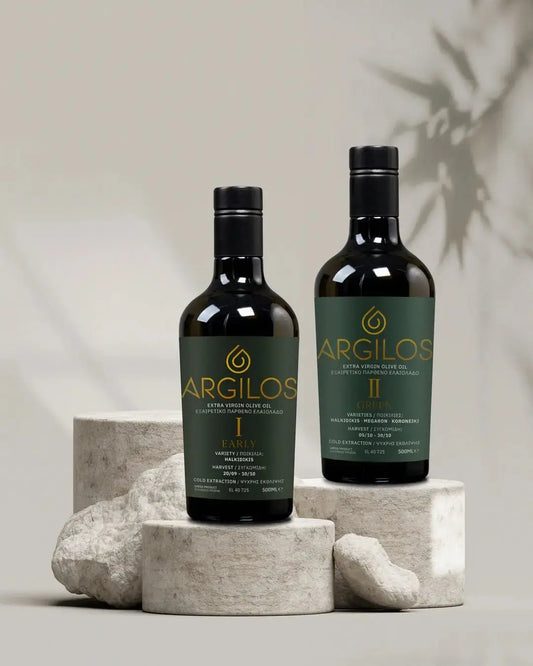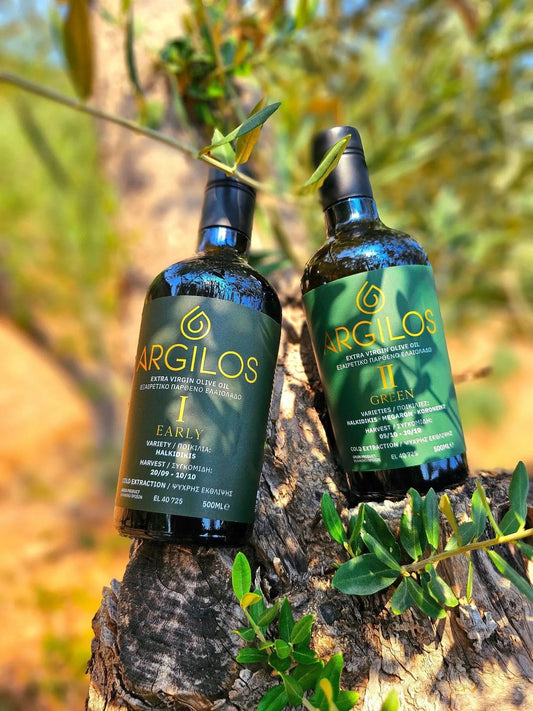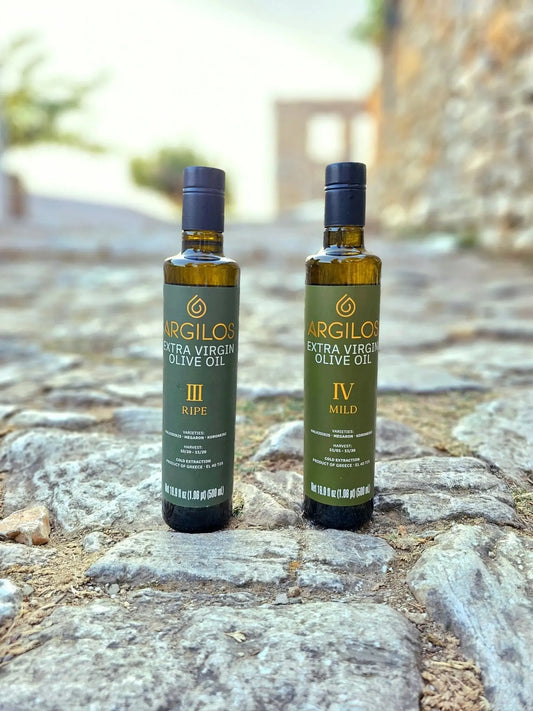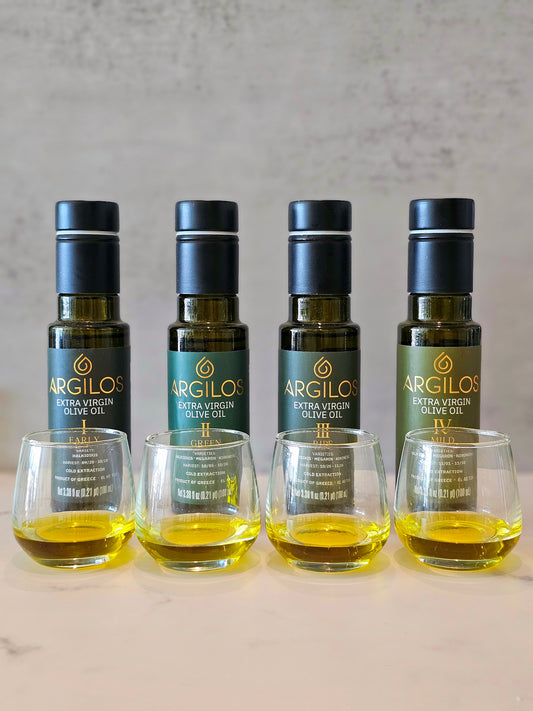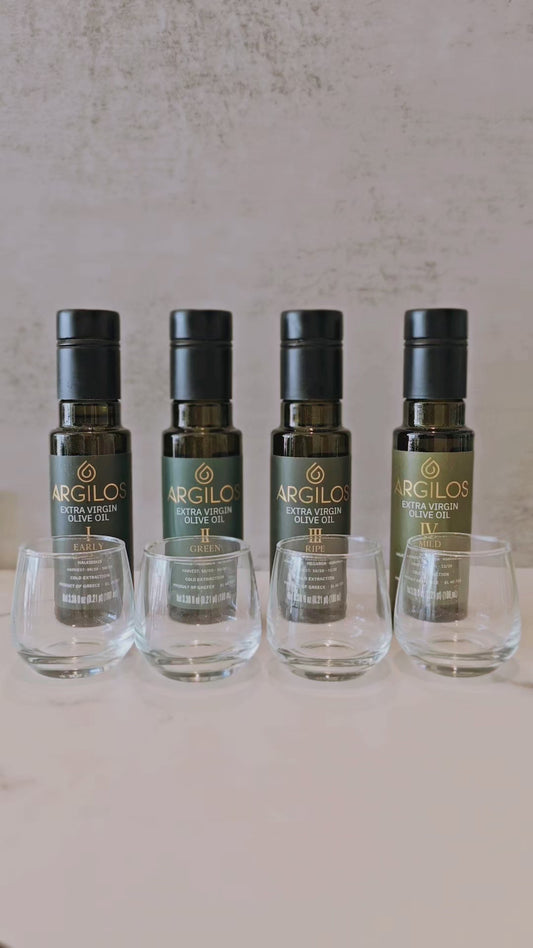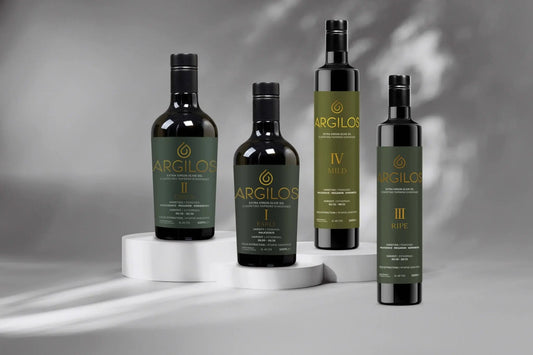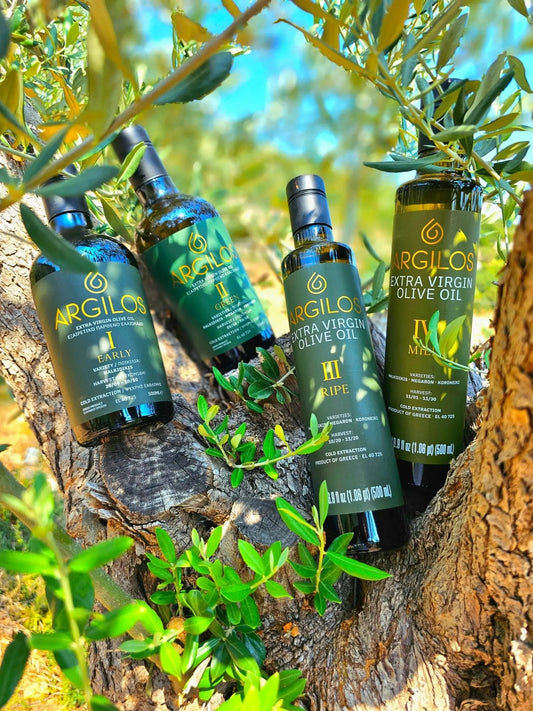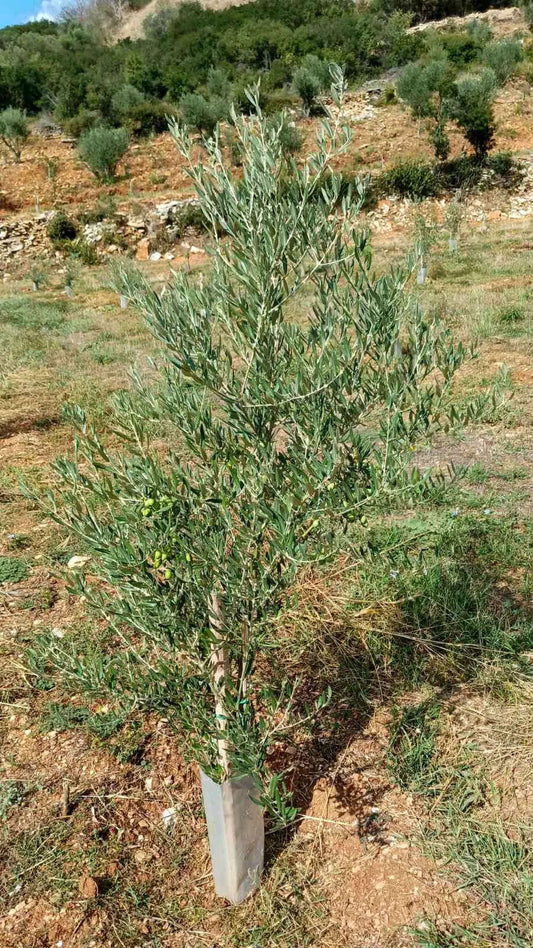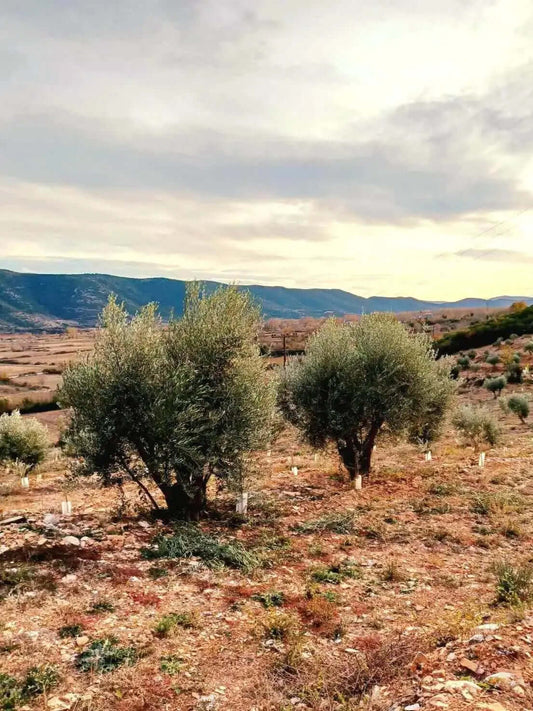Liquid Gold: How Olive Oil Became Ancient Currency
Share
Introduction: The Treasure of the Ancient Greek Economy
In ancient Greece and across the Mediterranean, olive oil was far more than a cooking ingredient, it was treated as liquid gold. This precious oil was a cornerstone of the ancient Greek economy, valued so highly that it often served as a form of currency and a standard of wealth. Merchants, farmers, and even athletes traded in olive oil, using it to pay for goods or as prizes worth years of wages. The history of Greek olive oil is deeply intertwined with trade, culture, and power, making it one of the most influential commodities in antiquity.
Origins of Olive Oil as a Prized Commodity
The story of olive oil history begins thousands of years before classical Greece. Archaeological evidence shows that by the Neolithic and Bronze Age, olive cultivation and oil pressing were well-established around the Mediterranean. Wild olives were first pressed into oil in the Near East as early as 5000–6000 BCE, and the practice spread westward. By around 3000 BCE, olive trees reached Crete, where the Minoan civilization grew prosperous—some historians speculate that the olive oil trade contributed to the Minoans’ legendary wealth. Seafaring merchants like the Phoenicians helped disseminate olive cultivation and created new markets for this versatile oil across the Greek islands and beyond.
As olive oil production expanded, so did its renown and value. By the first millennium BCE, oil was extensively produced and traded across the Mediterranean world. In Homer’s epics, olive oil appears among the treasures of kings, Homer famously referred to olive oil as “liquid gold,” placing it alongside gold and bronze in royal storerooms. Such references highlight how esteemed and valuable olive oil had become in ancient societies. It wasn’t just a food or commodity; it was a symbol of prosperity and a key to economic growth.
Production and Storage: From Grove to Amphora
Turning bitter olives into profitable oil was a labor-intensive process that underscored its high price. The hardy olive tree thrived in Greece’s climate, but it only bore a full crop in alternate years, and ancient farmers believed the best oil came from early-harvested green olives (which yielded less oil). These factors made high-quality olive oil scarce and costly. Harvested olives were crushed—at first by hand or with simple stone mills, and later with large wooden presses as technology advanced. By the Classical and Hellenistic periods, heavy beam presses weighted with stones were used to extract oil more efficiently, methods that remained in use for millennia. Even centuries later, the Romans still relied on improved presses like the trapetum (an olive crusher) to mass-produce oil and meet soaring demand.
Once extracted, olive oil was carefully stored and transported in specialized containers. Large clay jars called pithoi held bulk oil in Minoan and Mycenaean palaces, and amphorae became the standard transport vessels in commerce. Amphorae were ceramic jars with narrow necks and two handles, each holding roughly 20–40 liters of oil. Not only were they practical for shipping, but their stamped markings and distinctive shapes often advertised the oil’s origin and quality, much like a branded wine bottle today. Fine Greek olive oil, renowned for its purity, was exported in these amphorae to markets as far as Egypt and Iberia. The widespread discovery of ancient oil jars (from shipwrecks to distant trading posts) attests to a brisk olive oil trade crisscrossing the Mediterranean.

Olive Oil in the Ancient Greek Economy and Trade
Olive oil became nothing less than an economic engine for ancient Greece. In the 6th century BCE, the Athenian lawmaker Solon enacted reforms to protect and promote this valuable commodity. He famously forbade the export of any agricultural produce from Attica except olive oil, ensuring that surplus oil could be sold abroad while other staples stayed at home. This early export policy shows how central olive oil was to Athenian trade, it was essentially Athens’ chief export, a source of revenue and a strategic trade good. By encouraging olive cultivation and restricting other exports, Athens leveraged its “liquid wealth” to become a commercial power in the Mediterranean.
Other Greek cities and Mediterranean cultures similarly recognized olive oil’s economic importance. Indeed, olive oil was a cornerstone of ancient Mediterranean trade, connecting civilizations and shaping economies for centuries. Surplus oil from Greek city-states flowed to regions that could not grow enough olives, in exchange for grain, metals, and other commodities. Amphorae of Greek olive oil have been found in Egyptian tombs and in shipwrecks off Italy, indicating how far this “liquid currency” traveled. During times of local shortage, the Greeks themselves imported oil from places like today’s Italy, North Africa, and Spain. This international commerce only grew under later empires: by the Roman period, olive oil trade reached unprecedented scale. The city of Rome, for example, received a steady supply of olive oil as taxes from its provinces, and distributed it to residents as part of the annona (ration system). The remains of millions of amphorae (such as the Monte Testaccio mound in Rome) stand as archaeological evidence of an oil-fueled economy.
Olive Oil as Currency: “Liquid Gold” in Practice
Ancient Greeks at times literally treated olive oil as money. In local markets, oil could be bartered directly for other goods, and its value was well recognized. For example, one record notes that a gallon of olive oil cost about three drachmae, a considerable sum, given that a skilled worker’s daily wage was roughly one drachma. In effect, jars of olive oil were like coins or bullion, highly fungible and widely accepted in trade. For many farming families, olive oil was a primary source of income and could serve as a medium of exchange to obtain essentials in place of coinage. The idea of oil as “liquid currency” appears in various historical accounts and ledgers, underscoring how closely wealth was tied to this commodity.
One of the most striking examples of olive oil’s value is found in the Panathenaic Games of Athens. Winners of these prestigious athletic contests didn’t receive gold medals – they received hundreds of amphorae filled with premium olive oil from Athena’s sacred groves. A victorious athlete might win 100 or more amphorae, equivalent to tens of thousands of liters of oil. This prize was so lucrative that winners could sell their olive oil windfall for small fortunes. According to ancient accounts, a champion runner could earn 500 to 1,000 gallons of oil, which he typically resold at about 12 drachmas per 10-gallon amphora, amounting to several years’ wages for an average Athenian. These oil-filled prize amphorae essentially functioned as currency awards, and the Athenian law that normally banned olive oil exports was even waived for the victors so they could trade their reward abroad. In essence, athletic champions in Athens were being paid in liquid gold.
Cultural and Mythological Significance of Olive Oil
According to Greek mythology, the olive tree itself was a divine gift. The goddess Athena was said to have won the patronage of Athens by offering the first olive tree to its people, triumphing over Poseidon’s gift of a saltwater spring. This myth underlines the reverence Greeks had for the olive; the tree and its oil were seen as blessings from the gods, symbolizing peace and prosperity. It is no coincidence that Athens – the heart of the ancient Greek olive oil economy – took the olive tree as its sacred symbol and rewarded its heroes with oil.
Olive oil permeated daily life, rituals, and sports in Greek culture. It was used to anoint kings and athletes alike, signifying purification and honor. Greek Olympic and Panathenaic athletes would rub olive oil on their bodies before competitions, a practice believed to bestow strength and protect the skin. In religious ceremonies, olive oil burned in lamps as an offering to the gods, its pure flame symbolizing hope and divine favor. Oil was also poured on the bodies of the deceased during funerary rites, a final anointment to honor the dead and bless the journey to the afterlife. Beyond rituals, olive oil was the basis of cosmetics and medicine: Hippocrates referred to olive oil as “the great healer” for its therapeutic uses, and it served as the base for balms and perfumes in an era before modern soaps. From the kitchen to the gymnasium, olive oil’s presence in all aspects of Greek life elevated it from a mere foodstuff to a culturally sacred resource.

Ancient Texts and Archaeological Evidence
Our understanding of olive oil’s role as ancient currency is supported by both written sources and archaeological finds. Linear B tablets from Mycenaean Greece (c. 13th century BCE) record quantities of olive oil designated for temples as offerings to the gods, indicating that large-scale oil production and distribution were already important in the Bronze Age economy. Classical authors later documented the value of olive oil: Pliny the Elder praised it as a daily necessity, noting that “there are two liquids especially agreeable to the human body, wine for the inside and oil for the outside”. The dispersal of oil containers also speaks volumes. Greek trade amphorae often bore markings or inscriptions of their city of origin, much like coins were stamped with city emblems (for instance, Athenian coinage featured the owl of Athena as a civic symbol). In Athens, some workers’ wages and public dues were even paid in olive oil or other goods instead of silver, reflecting a blended economy where commodity and coin coexisted.
Physical evidence further reinforces olive oil’s historical significance. Archaeologists have uncovered numerous ancient olive presses across Greece and its colonies – some cut from stone, others assembled with beams and weights, showing the widespread infrastructure built around oil production. In the ruins of Pompeii, a sealed glass bottle of olive oil was found preserved, a tangible reminder of the product’s long shelf life and value as stored wealth. The endurance of the olive tree itself is another testament: in places like Crete and southern Italy, gnarled olive trees two or three millennia old still live, having likely supplied oil to generations across antiquity. These archaeological clues, combined with literary records, paint a vivid picture of an era when wealth was measured not only in coins or precious metals, but also in amphorae of olive oil.

Legacy of the “Liquid Gold”
Olive oil’s journey from ancient currency to modern kitchen staple is a testament to its enduring value. What began as a prized commodity in the ancient Greek economy has become a symbol of health and culinary excellence worldwide. Yet even as we drizzle Greek olive oil on a salad today, we are partaking in a tradition thousands of years old. The Greeks and their Mediterranean neighbors once treated olive oil as liquid gold for good reason: it was life-sustaining, economically vital, and culturally sacred. Its production supported farmers, its trade enriched cities, and its use touched every aspect of daily life from birth to death. In calling olive oil “liquid gold,” ancient people acknowledged a simple truth – in their world, this shimmering oil was as good as gold. And in many ways, thanks to its rich history and continued importance, it still is.


